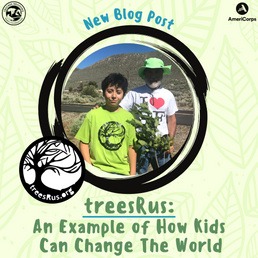The Wondrous World of Weeds: In Defense of Dandelions
- Haley Kirby, Operations Director
- May 1, 2019
- 4 min read
I tend to get defensive of plants that are labeled the dreaded “weed” word. I like to believe that all plants are good when in the right place at the right time. So what does “weed” mean anyway? A weed is simply a plant in the wrong place. That means a rose can be a weed if growing in the middle of a walking path. Imagine a rose as a weed! While I understand that some plants in the wrong place can be detrimental to the environment, in which case they should definitely be removed to restore balance, I am nonetheless sensitive to the overuse of the word.

“Plants become weeds when they obstruct our plans, or our tidy maps of the world. If you have no such plans or maps, they can appear as innocents, without stigma or blame.” This passage is by Richard Mabey in his book “Weeds: In Defense of Nature’s Most Unloved Plants.” Sometimes we need plans and should intervene with restoring balance that weeds tend to upend, but I think other times we are too quick to judge and label things negatively when we can’t see the larger picture unfolding before our eyes.
One such plant that has developed a bad rap is my friend, the dandelion. While some
look at this plant as an eyesore, I look at the dandelion as a very useful herb that inspires a sense of childlike wonder. Dandelions provide you with wishes, flower crowns and necklaces, as well as an assortment of culinary delights -- from dandelion wine and tea, coffee from roasted dandelion roots, dandelion salad greens, or my favorite, dandelion jelly spread over dandelion fritters. The root is also used to create a dye, and offers a plethora of medicinal properties to those who are open to it.

Our Development Director's, dog, Cooper.
Dandelion greens are bitter and get increasingly bitter with age (pick the young greens prior to flowering for the most mild flavor). This bitter quality aids digestion, and as such, many meat recipes call for a side dish of dandelion greens to help digest the heavy meal. Dandelion tea has been used to treat heartburn (a remedy I will surely try ASAP) and as an energy tonic. The name dandelion is french for “lion’s tooth” which describe its jagged leaves, but could also point to the vigor and energy produced by consuming this plant. Some of this vigor may come from dandelions’ extensive nutrient concentration, which includes vitamin C, E, and several B vitamins, potassium, calcium, iron, magnesium, niacin, phosphorus, zinc, proteins, and numerous more!
European settlers went to great lengths to transport these beloved dandelion seeds to America, given its whole host of uses. Imagine their disbelief if they could see us using chemicals to eradicate the precious plants they took pains to carry over and that have so much to offer. Dandelions are friends and food!
Along with their extensive human use, dandelions provide many ecological benefits. Some of these benefits include being an early nectar source for bees (they bloom before most other flowers are out), forage for rabbits, and seeds for small birds. Dandelions have also been reported to help fruit trees produce more fruit!
Dandelions seem to provoke strong negative feelings of lack of control, or of our garden plans going awry. When viewed for their numerous positive attributes however, dandelions can appear as welcome guests, cheerful compatriots ready to be of assistance. So, maybe we should loosen our plans, let go of overly uptight manicured edges, and embrace the wild and wonderful world of weeds!
Dandelion Fritters*:
4 Cups freshly picked and washed dandelion flower heads (be careful where you pick your flowers to ensure that no herbicides have been used)
2 Cups flour
2 Eggs (can substitute with one tablespoon ground flaxseed combined with three tablespoons of water)
2 Cups milk (milk substitutes work as well)
Optional: Add sweet or savory spices to your batter if desired! Some options include cinnamon and sugar, rosemary and salt, or parmesan and pepper.
Optional: Toppings! Powdered sugar, maple syrup, dandelion jelly (recipe below), or even use to top a bowl of ice cream. The possibilities are endless so let out your creativity!
Combine your flour, eggs, milk, and any spices if desired to make a batter. Warm olive oil in skillet.
Dip your dandelion flowers into the batter to fully coat the flowers and place them in the preheated skillet.
Cook and flip fritters till they achieve a slight brown color and place on paper towel to drain excess oil.
Garnish with desired toppings and enjoy!
*Recipe from Edible Wild Food
Dandelion Jelly*:
3 Cups freshly picked and washed dandelion flowers (be careful where you pick your flowers to ensure that no herbicides have been used)
3 Cups water
1 Tbsp vanilla extract
1 Lemon cut into 3-4 thick pieces
1 Tsp cinnamon
4 Cups sugar
Add dandelion flowers, water, vanilla, lemon, and cinnamon to a pot and bring to a boil.
Reduce heat and simmer for 30 minutes.
Turn off the heat and leave to steep overnight (or at least 6 hours).
Strain and squeeze out liquid from flowers with a cheesecloth.
Add the liquid back to a pot and bring to a slow rolling boil for 2-3 hours (stir every 20 minutes to prevent burning).
Pour liquid into sterilized jars.
Enjoy! Jelly can be kept for one year.
*Recipe from Mother Earth News
Resources:
“Mother Nature’s Herbal” by Judith Griffin, Phd
“Weeds: In Defense of Nature’s Most Unloved Plants” by Richard Mabey
Invasion Biology Species Summary Project, Columbia University: “Dandelion (Taraxacum Officinale)” by Hourdajian, Dara.
Gale Encyclopedia of Alternative Medicine: “Dandelion.”
Truckee Meadows Parks Project: Dandelion












